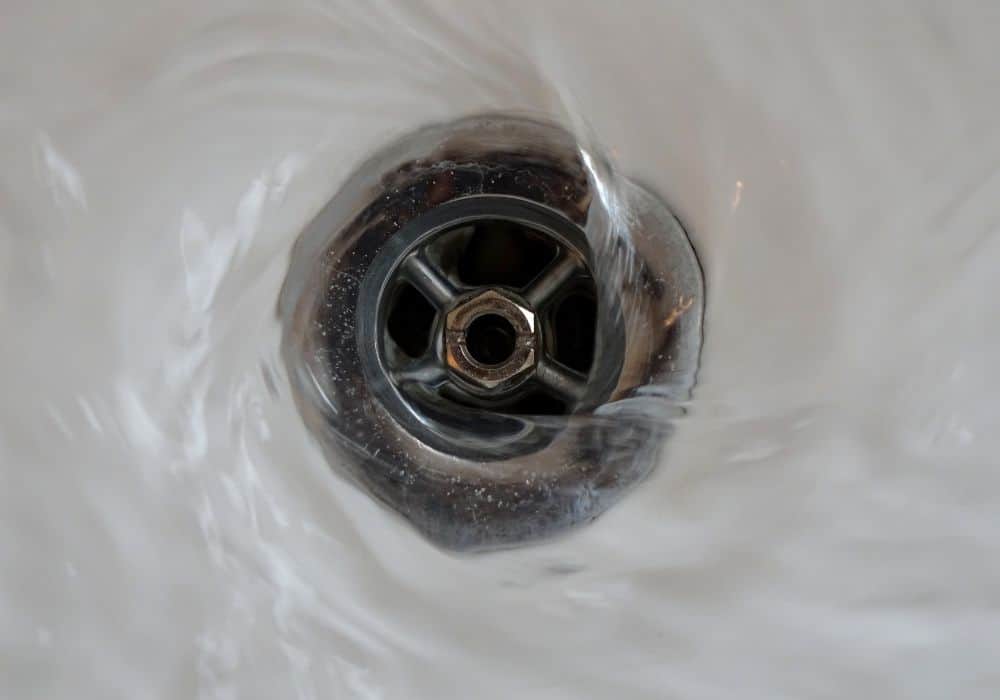Drains are practically a breeding spot for different kinds of bugs due to the presence of moisture and waste. This is likely to develop into a major issue in your home, making it necessary that you can control the bugs in the drain situation.
Several kinds of bugs live in drains, including drain flies, fruit flies, cockroaches, phorid flies, psocid mites, and fungus gnats. These bugs thrive in drainage systems because of the dark, humid environment it provides.
While these bugs may not be harmful, they can constitute a nuisance in your home, making you uncomfortable. Read through this guide to learn more about these bugs and the best methods to help rid yourself of this situation.
Do Bugs Come from Drains?
Different bugs can live in drains. However, this is not to say all the bugs you see around your drain came out of there. It is a common misconception to think that all the bugs you find in your drain live down their connecting pipes.
Sometimes, the bugs in drains result from the dampness of your walls and ceilings rather than the drain itself. This makes it important to identify the bugs around your drain so you can tell if they came from the drain or elsewhere.
Proper identification is necessary to tackle the real cause of your bugs in the drain problem instead of trying remedies that won’t work for that particular bug type.
6 Different Bugs Living in Drains (Proper Identification)
The first step to eradicating the bug in the drain problem is identifying the bug you see around the drain. This will help you figure out how to get rid of these bugs. Here are six of the most common bugs that live in drains.
1. Drain Flies
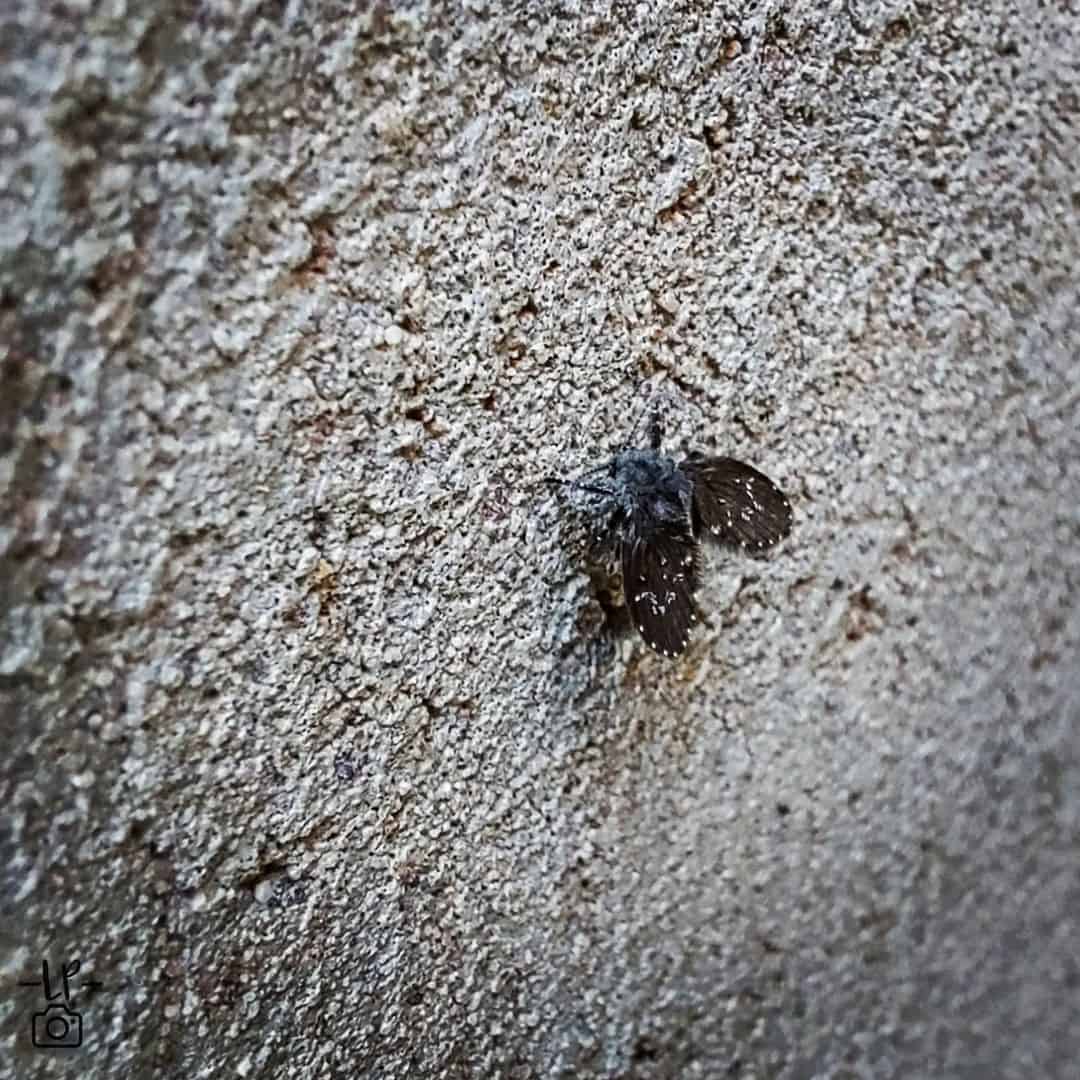
Image Credit: lizlpienaar
These flies are the most common types of bugs you see around drains. They usually start off as eggs inside the drains in your bathroom especially, and then go through all the stages of development aided by the damp environment the drain provides.
After their last developmental stage, you will find them outside and flying around your drain. Some call these bugs ‘moth flies’ because of their seeming resemblance to moths upon closer inspection due to their hairy bodies and wings.
They are mostly brown or black and smaller than a housefly, usually 1/8 inch in length, although they belong to the same group. Additionally, these bugs also thrive in drains, septic tanks, sewers, and any element sullied with sewage.
These flies generally have a lifespan of 8 – 28 days, but they can lay up to 300 eggs in just two days, so the possibility of these bugs going away by themselves is incredibly low. You have to take measures to help you eliminate these bugs.
N.B: Drain flies are not only common in drains alone; messy garbage disposals and busted pipes are also hot breeding sites for these flies to lay eggs.
2. Fungus Gnats
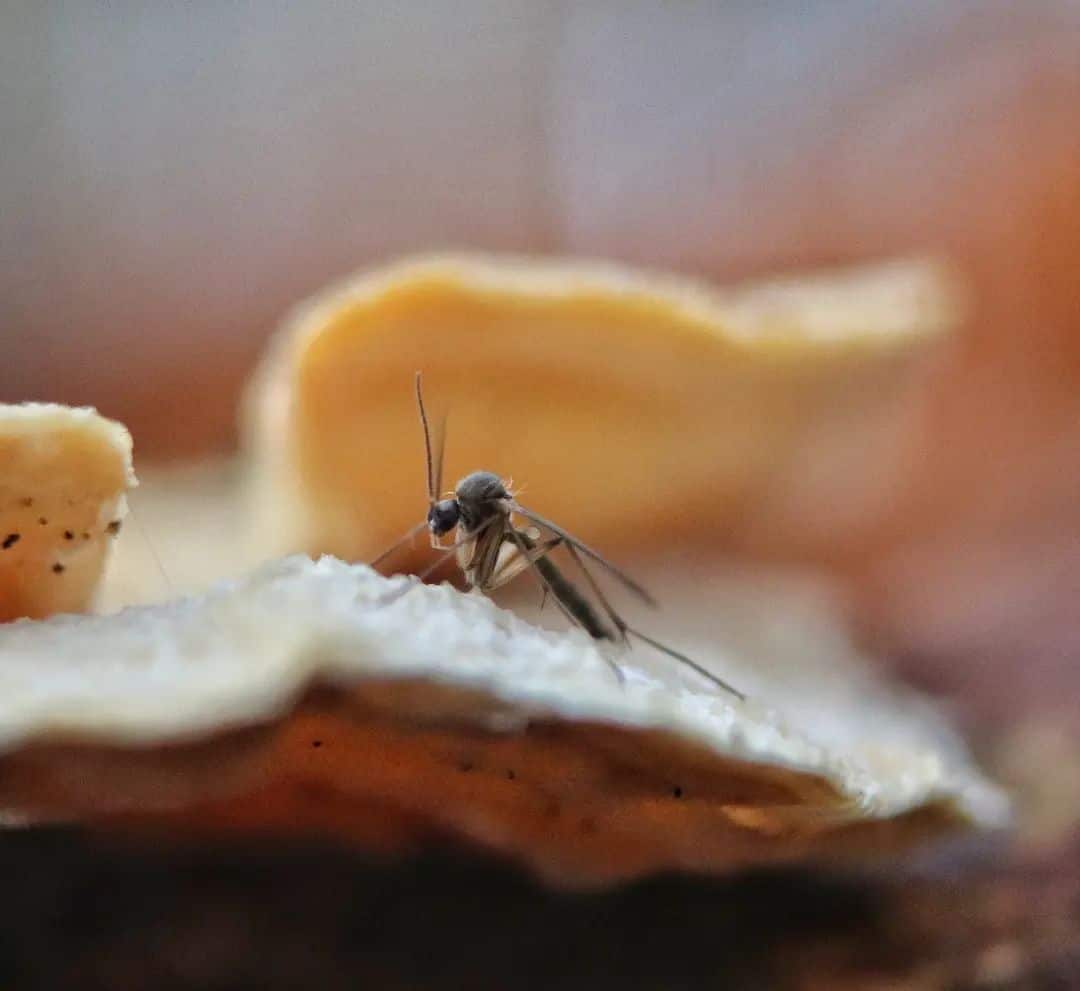
Image Credit: erika_5436
Here is another common pest you can find around your drain. Do not be deceived by their delicate-looking bodies and wings because if not managed well, you can have a full-blown infestation of these bugs in your bathroom.
These bugs, although delicate, have a stretched body but slimmer legs and resemble a mosquito. Like other drain flies, these fungus gnats are present in drains because of the fungus that grows in drains and pipes when it’s not washed properly.
For plant owners, you may have noticed that you see bugs with similar features around your garden space. This is because gnats prefer to live and breed in moist soil, so it is not surprising that you will find them more around plants.
Their presence in drains is because, under the right circumstances, moisture in the drains produces an environment similar to that in your garden soil so fungus gnats can survive and lay eggs.
3. Fruit Flies
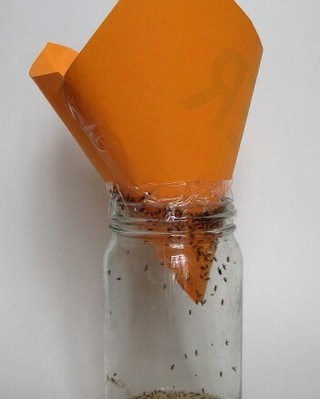
Image Credit: pioneerthinking1
As their name implies, these flies are a common household pest that you will find around aging fruit and vegetables around your home. Fruit flies are tiny and are about the size of a fungus gnat, usually around 3 mm in length and 2 mm in width.
Pests like these often stay in drains because of the fungus and humid environment the drains provide. This environment helps fruit flies lay their eggs and provides a comfortable environment for these pests to live.
Dealing with fruit flies can be frustrating because they hardly sleep, so they are always active. If you wash away bad food or fruit in your kitchen sink often, you are at risk of these flies breeding in your sink.
Furthermore, fruit flies have a short lifespan but this does not make it less of a problem because these pests breed fast so every time the older flies die, more new eggs are hatching and waiting to continue the infestation.
4. Phorid Flies
Phorid flies are often mistaken for fruit flies due to the similarities between these two bugs. The best way to differentiate between these two bugs is to observe the back of these flies; if you notice a hump, you know you are looking at the phorid flies.
What distinguishes these flies from the others is that as opposed to just flying, these bugs run very fast around the drain surface as opposed to flying. They come in a range of colors with the most common ones being brown, black, and yellow.
Phorid flies thrive in areas with moist soil and because of the sewage buildup in your drains, it makes it the perfect environment for laying eggs. Furthermore, with these flies, you only notice the infestation once they are fully developed and crawling about your drains.
Residue from daily household products like toothpaste or food you wash down your kitchen sink can provide enough elements to create the environment the phorid flies would survive.
5. Psocid Mites Or Booklice
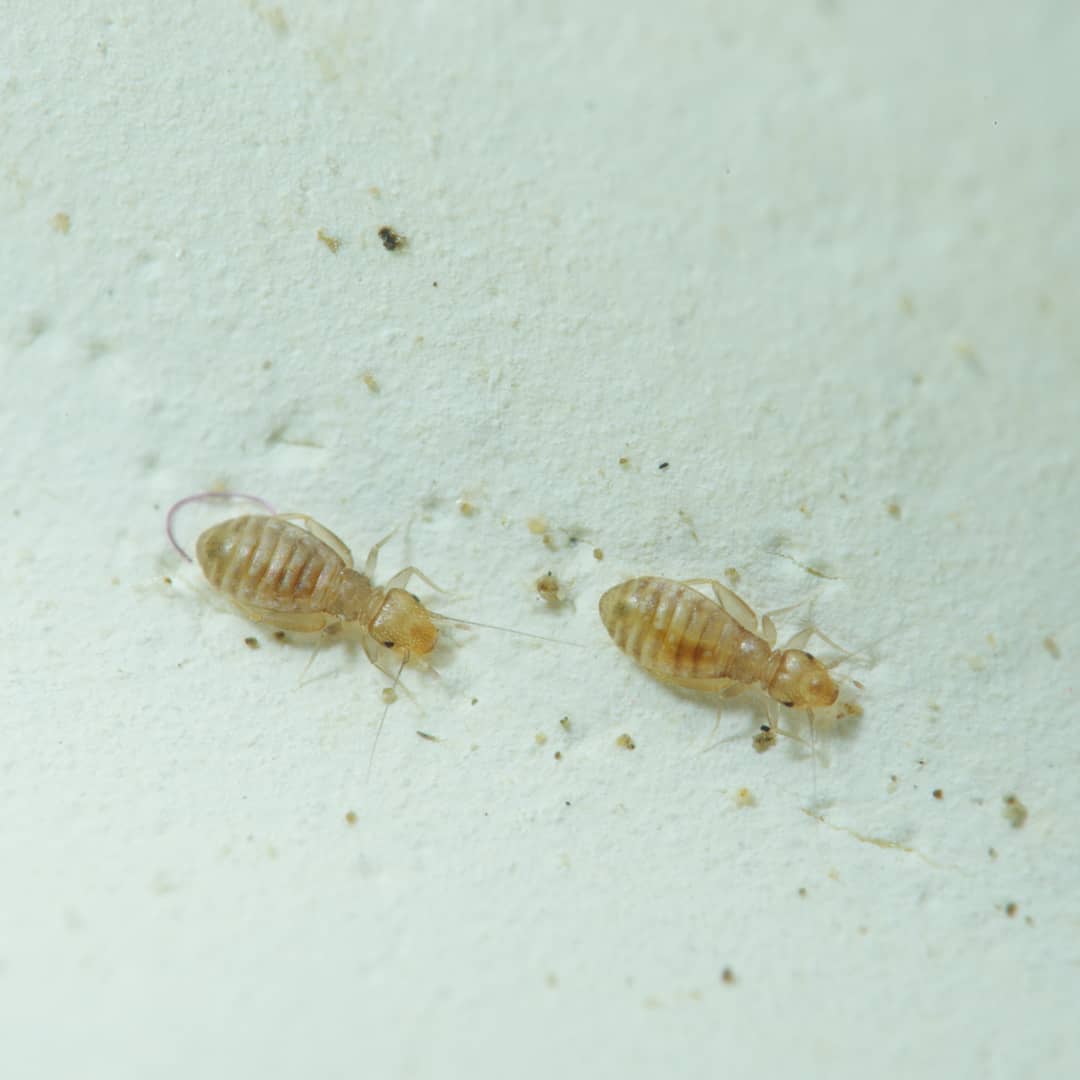
Image Credit: aphidiinae05
These insects live off mold and fungus, which makes the dark and humid environment drains offer a common place for them to live. They can start with a few bugs around your drain but will spread fast and infest the other spaces in your kitchen or bathroom if not controlled.
You must know that psocids have different specs, but the common factor with these bugs is that they live off mold and infest areas with moisture, so it is no surprise that they can crawl up your drain after breeding in the pipes.
Additionally, some call these mites booklice and their colors depend on their specification but most times, the ones that infest bathroom drains are majorly the white ones that form a colony once their eggs hatch.
In terms of their lifespan, these mites live for about 30 days, but because of the breeding and how fast they reproduce, this infestation may go on longer than their average lifespan days, which means you will need to take care of this situation yourself.
6. Cockroaches
Most times, when there is a cockroach infestation in your house, it is often via the drains due to cracks in the pipes. Cracked pipes are usually humid and house fungus, which cockroaches thrive in; they use these cracked spaces as nesting grounds.
It is only a matter of time before these eggs develop and crawl up the drains and infest your homes. The sizes of these pests also vary; many are bigger than most of the other drain bugs, but there are also smaller ones that crawl around the drains.
These cockroaches are not always in high numbers. You will find other tiny bugs, but you can be sure that if you see one by your drain, there are others down the pipe. Most of them are brown and in some cases, white.
The presence of cockroaches usually points to dirt or debris down your drain and if these bugs nest there, it becomes harder to get rid of them.
How To Get Rid of Bugs in Drains?
Depending on the degree of infestation, there are several ways you can get rid of bugs in your drain ranging from basic home remedies to using bug repellants or contacting pest control services if it gets out of hand. View below for more.
Basic Home Remedies
In most cases, a simple remedy like flushing your drainage system is enough to get rid of the bugs around the drain, and here are some of the most efficient methods to consider.
- Pouring Boiling Water Down the Drain
This is the simplest way to eliminate bugs in drains. It involves using enough water to flush the drain until all the organic matter washes away. You may have to repeat the process for a week before you see any visible result.
- Baking Soda, Salt, and Vinegar Mixture
This is a more extensive flushing mechanism than ordinary boiling water. The essence of the mixture is to allow for more reach inside the pipes that water alone may not touch and all you need to do is pour this mix in the drain and wait 24 hours before flushing out the mix with water.
- Soap, Water, Sugar, and Vinegar Mixture
To perfect this mixture, you must add a cup of sugar to a bowl of water, dish soap, and a cup of vinegar, then place it by the drain. This aims to make the solution sweet enough to attract the flies so it traps them in the solution.
- Apple Cider Vinegar and Plastic Wrap
Here is another simple DIY solution to help you get rid of bugs. This works by pouring a cup of apple cider vinegar in a bowl and covering it with plastic wrap, then poking holes at the top so flies fall into the apple cider when they get close to the bowl.
Chemicals and Repellants
When simple home remedies do not work, do not panic. You still have the option of buying strong bleach and chemicals to help you eliminate these bugs, and several kinds of these bleaches are on the market today.
All you need to do is pour a cap of this bleach down the drain. This should eliminate the bugs and eggs and larvae that may be down those pipes.
Call a Professional
If all of these methods prove abortive, then it is time for you to reach out to a professional pest control company so they can help you fumigate and eliminate all traces of drain bugs in your home.
Tips To Help Prevent Bugs in Drains
While it may be hard to keep drains completely dry, there are some preventive measures you can consider to help you avoid these bugs crawling up your drains. Below are some tips to consider.
- Ensure you properly seal your pipes, as this makes it harder for drain bugs to crawl up the drain
- Consider wrapping your pipes with insulation to control condensation
- Do not pour excess water down your drains
- Try to avoid clogging your drainage system
- Invest in preventive measures such as drain covers, stoppers, and drain covers to help control any pest infestation
Final Thoughts
The issue of bugs in drains is almost unavoidable because keeping your drains completely dry is impossible, especially in a very active household. However, this infestation is not impossible to handle. Here are some ways to take care of your bug problem.
- Try simple home remedies and mixtures to help you eliminate the bugs
- Invest in bleach strong enough to terminate the bugs
- Contact pest control services to help you control a full-blown infestation
